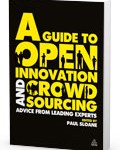Point: Entrepreneurs in high-growth companies can influence the federal government to increase their company’s access to capital, people, and markets.
Story: Accelerating high-growth entrepreneurship
Background: The Startup America Partnership, an initiative launched by President Obama in 2011, seeks to accelerate high-growth entrepreneurship. One step is to reduce the barriers entrepreneurs face when starting high-growth businesses. To accomplish this step, senior Obama Administration officials convened roundtables in eight US cities to hear from entrepreneurs and local leaders about what the federal government can do to help high-growth entrepreneurs.
Event: Congressman Jared Polis kicked off the event, along with panelists Phil Weiser (White House National Economic Council), Don Graves (Department of Treasury & President’s Council on Jobs and Competitiveness), Michael Fitzpatrick (Office of Information and Regulatory Affairs) and local leaders like venture capitalist Brad Feld (Managing Director & Co-founder of The Foundry Group) and Kathy Rowlen, (CEO and founder, InDevR).
After the short panel presentations, the 150 invited attendees from Boulder’s entrepreneur community divided into four groups to discuss possible short-term improvements of federal government regulations and procedures that affect high-growth entrepreneurial companies. Startup America will prioritize the suggestions, distribute them to respective federal agencies, and implement them as quickly as possible.
Definition: Startup America focuses its efforts on entrepreneurial high-growth companies as distinct from both small business and larger, more established companies. These high-growth companies differ from small local businesses (e.g., local restaurants and service providers) in that high-growth companies push the limits in their efforts to scale new innovative products, services, and business models. High-growth companies hire hundreds of employees as the entrepreneur pursues national or global scale. Unlike small businesses, high-growth companies often aspire to be the next Fortune 500 company that defines new and innovative industries. Discussions in the breakout sessions suggested that creating scale means gaining access to three key resources: capital, people, and markets. Changes at the federal level could markedly improve access to these resources, spur economic growth, and create jobs.
Issue: Improving Startups’ Access to Capital
Solutions Suggested:
- Exemptions that let banks extend loans to entrepreneurs. (Some participants cautioned, however, that even if regulators let traditional banks lend to high-growth entrepreneurs, the banks wouldn’t make the loans due to cultural mismatches — they see startups as too risky.) Venture capitalist Brad Feld recommended focusing efforts on venture banks that do understand entrepreneurial companies, such as Comerica, Silicon Valley Bank, and Square One.
- Tax-code changes that encourage equity investment in start-ups rather than investments in more established firms that can borrow from banks.
- Expanding the government’s SBIR program for funding innovators and startups. One problem with today’s SBIR grant rules is that SBIR funds can only be applied to prototyping ideas, not commercializing them. The rules assume that entrepreneurs can find private capital once their ideas are ready for commercialization. But in these times of limited access to private capital, many innovation-focused companies can’t find the money they need to convert their SBIR-developed innovations into products. Attendees suggested more funding for SBIR grants and liberalization of SBIR-related regulations to increase job creation.
Issue: Improving Access to Talent
The problem is that many regulations assume — or almost mandate — a traditional workaday paycheck relationship between company and labor. In particular, IRS tax code elements (e.g., contractor/employee tax rules and Section 409A deferred compensation) and SEC regulations (e.g., on secondary markets of shares in private companies and stock-option accounting rules) stymie the kind of flexible access to skilled talent and gain-sharing that high-growth companies need.
Solutions Suggested:
- Exemptions to some of these regulations during the early stages of a company’s founding, so startups could have both arms-length and sweat-equity relationships with people.
- Immigration reform to retain foreign-born college graduates and to encourage both entrepreneurs and investors to come to the United States. US colleges and universities profit from full-tuition foreign students, but the country loses that educational investment when current immigration rules force the graduates to leave the US.
- Move forward on “Start-up Visa” programs that enable early-stage, high-growth entrepreneurs to come to the US and start their companies here. Attracting and retaining both talent and capital will help create innovative future companies that create future jobs.
Issue: Improving Access to Markets
Regulations designed to protect consumers can backfire if the approvals process is so cumbersome or takes so long that entrepreneurs run out of resources before they get approval. Waiting months to hear back on SBIR funding or years for regulatory approvals can exhaust startups’ resources. The root cause of the problem is unbalanced incentives on government. Regulators and politicians face high penalties for under-regulation (i.e., they worry about “what if someone gets hurt by permitting X”). But, these same government officials experience little or no counterbalancing penalties for over-regulation of innovation (the millions of people awaiting healthcare or environmental solutions that are delayed or stymied due to over-regulation). The problem is that everyone can see the failure of lax regulation but few can see the lost opportunity when a regulator says “no.” Problems like economic underperformance — or disease and death caused by a lack of entrepreneurial solutions — aren’t as noticeable. As one participant said, the regulator’s motto that “failure is not an option” all but implies that innovation is not an option, either.
Solutions Suggested:
- Pinpoint and cut out as much paperwork and unnecessary regulation as possible.
- Remove delays from grant-approval and regulatory approval processes
- Opt for self-policing solutions or data reporting rather than up-front regulation.
As Go Entrepreneurs, So Goes America
To me, the most distressing stories I heard at the event were from entrepreneurs who felt that their only option was to leave America for more growth-friendly countries like the UK and China. Excessive regulatory demands and delays, combined with high legal costs, are driving entrepreneurs to go overseas, and countries are offering incentives and capital to attract them. These entrepreneurs aren’t just thinking about outsourcing a few low-skill jobs, but taking the whole company — along with the innovation, business growth and new jobs — overseas.
Phil Weiser noted that America’s venture capital environment does have a unique quality of allowing entrepreneurs to fail and resurrect themselves to produce later greatness. Yet despite this “permission to fail,” some participants feared that the government-imposed limits in the U.S. on access to capital, people, and markets mean that high-growth companies aren’t permitted to succeed. And if they can’t succeed in the U.S., they can too easily move. In today’s competitive world, more countries have the resources and motivations to host the best and brightest. Today’s mobility of capital, people, goods, and information mean that high-growth companies can readily relocate and take their energy, innovation, and success with them.
At the same time that some entrepreneurs felt that the U.S. government may have failed their high-growth companies, those in government see that these entrepreneurs have failed government, too. Panelists urged the attendees to participate in government. Although entrepreneurs focus on telling and selling their ideas to customers and investors, they have not spent sufficient resources telling and selling to government. If citizens, including high-growth company entrepreneurs, are the customers of government, then government can only succeed with timely and useful feedback from high-growth company entrepreneurs.
Action
- (Note for our international readers: Although this particular post focuses on the U.S., I’m sure your country has analogous means for improving your government’s understanding of the value of innovation and high-growth entrepreneurship.)
- Think about what regulations and government processes create needless obstacles to innovation and growth for your high-growth business.
- Post your ideas or vote on the Startup America’s open innovation forum (http://reducingbarriers.ideascale.com/)
- Track and comment on pending regulations at Office of Regulatory Affairs
- Lobby your senators and congressional representatives for more entrepreneur- and innovation-friendly laws
Tags: entrepreneurship, Growth, Innovation, jobs, US competitiveness
 simple: the technology is already proven to work; it just needs to be scaled or adapted. In short, with open innovation a new technology has a much lower risk of failure than starting internal R&D from scratch. Also, given the realities of corporate life, internal R&D people aren’t just doing innovation all the time — they have administrative work and meetings — which means that internal innovation is much less efficient than open innovation.
simple: the technology is already proven to work; it just needs to be scaled or adapted. In short, with open innovation a new technology has a much lower risk of failure than starting internal R&D from scratch. Also, given the realities of corporate life, internal R&D people aren’t just doing innovation all the time — they have administrative work and meetings — which means that internal innovation is much less efficient than open innovation.









